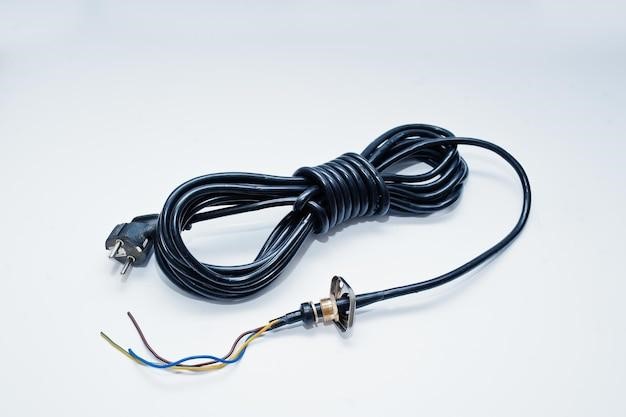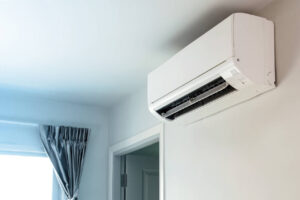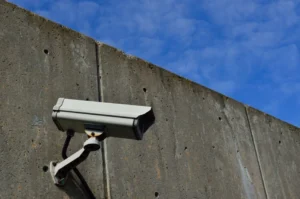Tips For Choosing The Right Electrical Cords For Your New Home

A new home’s move is an exciting moment full of opportunities. However, it also presents a number of crucial choices to protect the security, comfort, and convenience of your family. Selecting the appropriate electrical cords to power your home is one thing that frequently gets missed in the chaos of a relocation.
The ease with which your devices, appliances, and systems function can be significantly impacted by the cords you use. By investing some time up front in the study and careful consideration of electric cords, you can experience peace of mind knowing your new home is set up for optimal and dependable performance.
Therefore, this article offers important tips on choosing electrical cords that can safely and reliably supply electricity to power everything your home has to offer.
1. Choose From a Reputable Electrical Cord Supplier With a Variety Of Electrical Cords
Selecting an electrical cord might seem trivial, but when it comes to setting up a new living space, it is one of the most significant tasks. Therefore, you can make this task easier by choosing the right place to buy these cords from a reputed supplier with a wide selection. Opting for an established supplier guarantees top-quality cords that comply with all necessary safety standards.
It also means you have many choices to find cords tailored to your home’s specific needs. Seek out a supplier who offers different varieties of cords: extension cords, computer cords, appliance cords, outdoor cords, and so on. With an array of options, you can select cords based on voltage, amperage, and plug/outlet compatibility for each device.
A reputable supplier will also provide customer service representatives to address any inquiries. You can obtain professional guidance specific to your project rather than speculating. Reputable suppliers also offer warranties for their products. You are, therefore, covered in case problems do arise later.
2. Understand Your Home’s Electricity Needs
The electrical cords you need depend significantly on your home’s overall electrical system and powered devices. Take note of the types and wattages of appliances, electronics, and other equipment used. Note how many outlets are required and where they will be located. Also, consider any future expansions or renovations involving adding circuits or devices.
Pay special attention to high-powered items like stoves, dryers and water heaters. These require thicker gauge cords that can handle higher amperage loads. Be sure to match voltages, too. For example, 120V cords won’t work for 240V appliances. Also, outdoor equipment may need waterproof and UV-resistant cords.
Take this information to your electrical cord supplier to determine the best cord types, gauge sizes, outlet configurations, and quantities required. A complete picture of your home’s power profile helps ensure everything works safely and reliably together from day one.
3. Choose the Right Plugs and Outlets
With different plug and outlet standards worldwide, choosing cords compatible with your local system is essential. The most common plugs, for example, in North America are NEMA 5-15P and 5-20P, requiring matching 5-15R and 5-20R outlets. Verify your existing outlets, then match cord plugs accordingly.
Consider future-proofing as well. Installing outlets that accommodate higher amperage plugs, like NEMA 6-20R, allows for the use of thicker appliance cords down the line if needed.
Grounding is also critical for safety. Three-prong grounded plugs and outlets protect against shocks, while two-prong adapters should not be used long-term.
4. Choose the Right Wire Material
The material used for the individual wires within the cord jacket affects its durability, flexibility, and safe ampacity. For most household applications, cords made with copper wire offer the best balance of qualities. Copper conducts electricity efficiently and has a higher safe carrying capacity than aluminum at standard thicknesses. It also has greater corrosion resistance.
Furthermore, consider specialized cord types for high-heat applications like ovens, wiring, or heavy-load devices. Cords with thermoplastic insulation hold up well to heat without degrading over time, and cords containing fine-strand copper offer increased flexibility for tight bends.
5. Consider Future-Proofing Your Home
It’s a good idea to future-proof your electrical cord choices when setting up a new home. Installing higher-rated cords than strictly needed now allows for power upgrades down the line without rewiring. For example, using 12-gauge cords instead of 14-gauge accommodates higher-wattage items in the future.
Consider future electric vehicle charging needs, too. Installing outlets like NEMA 14-50 now saves the hassle of retrofitting later. Running extra circuits to areas like garages provides charging flexibility. Outdoor receptacles let you take advantage of solar power or whole-house generators someday.
6. Consider Your Budget
While safety should be the top priority, considering your budget is also essential for choosing the right cords for your needs and outlet installations. Cheaper cords may function but use lower-grade materials, posing risks down the road. For critical applications, avoiding the lowest-cost options provides valuable peace of mind.
Nevertheless, higher prices do not always mean higher quality. Carefully compare specifications and certifications to value when shopping for different cord options. Consider purchasing cords individually versus bundled kits, saving where possible without compromising safety.
Conclusion
Choosing electrical cords with careful research and the right priorities will set your new home up for optimized performance, lower costs, and hazard-free operation. Starting with reputable suppliers, fully understanding your needs, future-proofing wisely, and never compromising on safety will help ensure the cords powering your home do so dependably for many years ahead.







